|
|
Post by MinnesotaNationalist on Nov 10, 2017 2:45:02 GMT
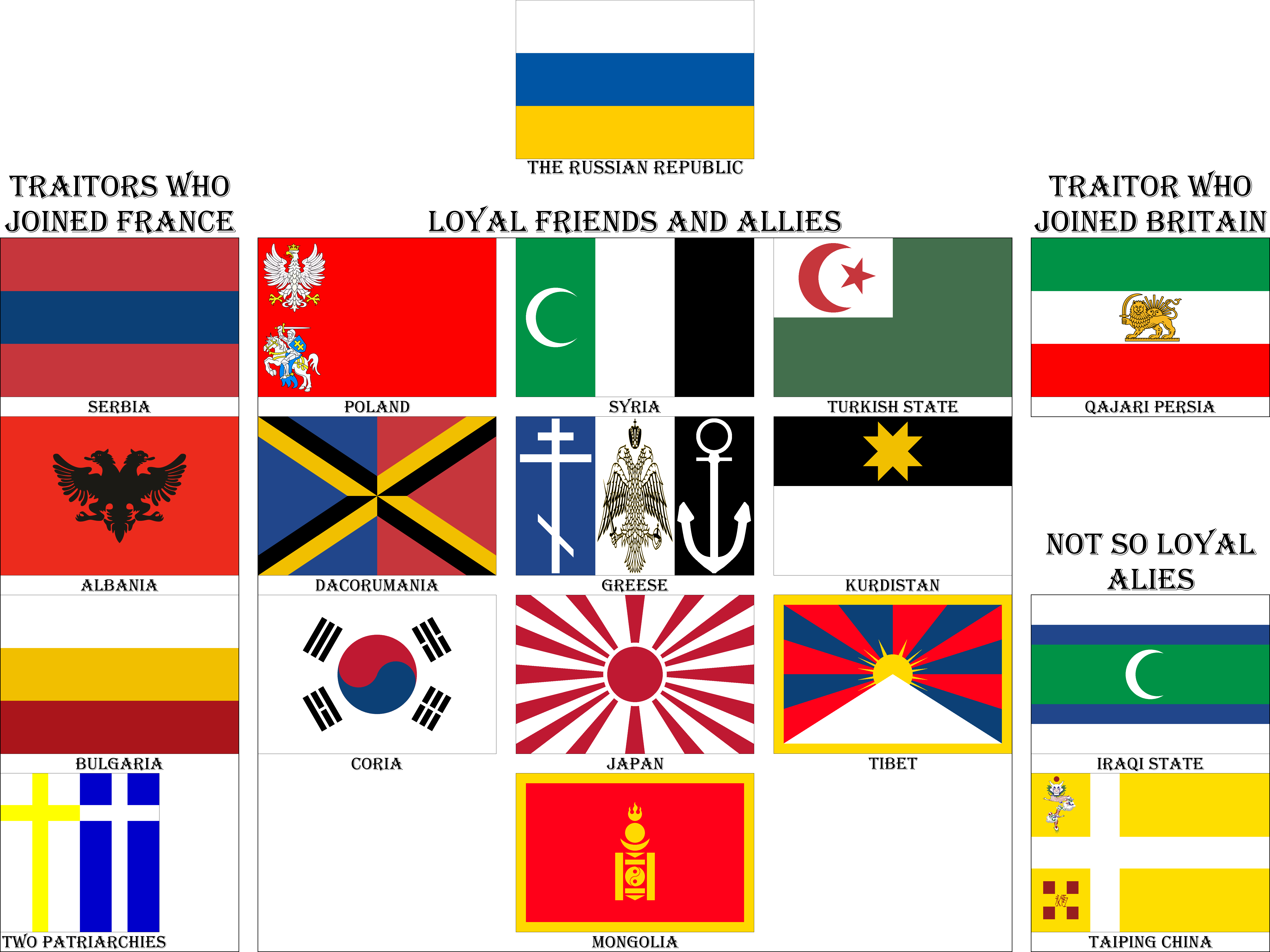 Details eventually, maybe. Also, let's play spot the inconsistencies, shall we? But the true question is, are they really inconsistent, or is there conspiracy afoot? |
|
|
|
Post by MinnesotaNationalist on Nov 13, 2017 19:06:56 GMT
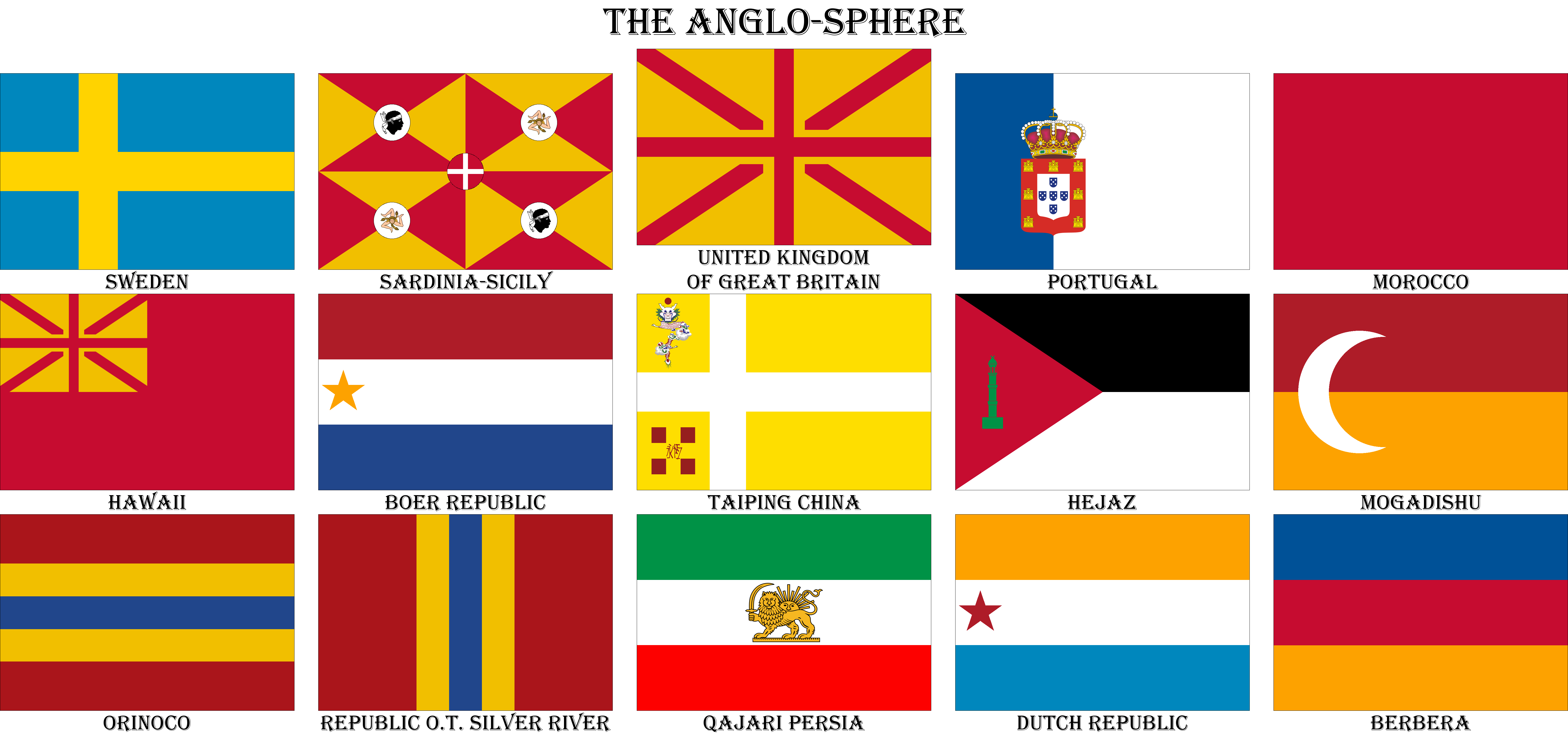 Last or second-to-last bit of a flag filler before West Africa or Chapter 8. If there will be more flag filler, it'll be neutral states. Note: While Taiping is listed here as a member of the Anglo-sphere, and also a member of the Russo-sphere, both certainly try to keep their distance from them. Also, Hawaii, because Oceania is the one place in the world I haven't touched on at all so far. I've even put more effort into South America. |
|
|
|
Post by MinnesotaNationalist on Nov 29, 2017 3:31:53 GMT
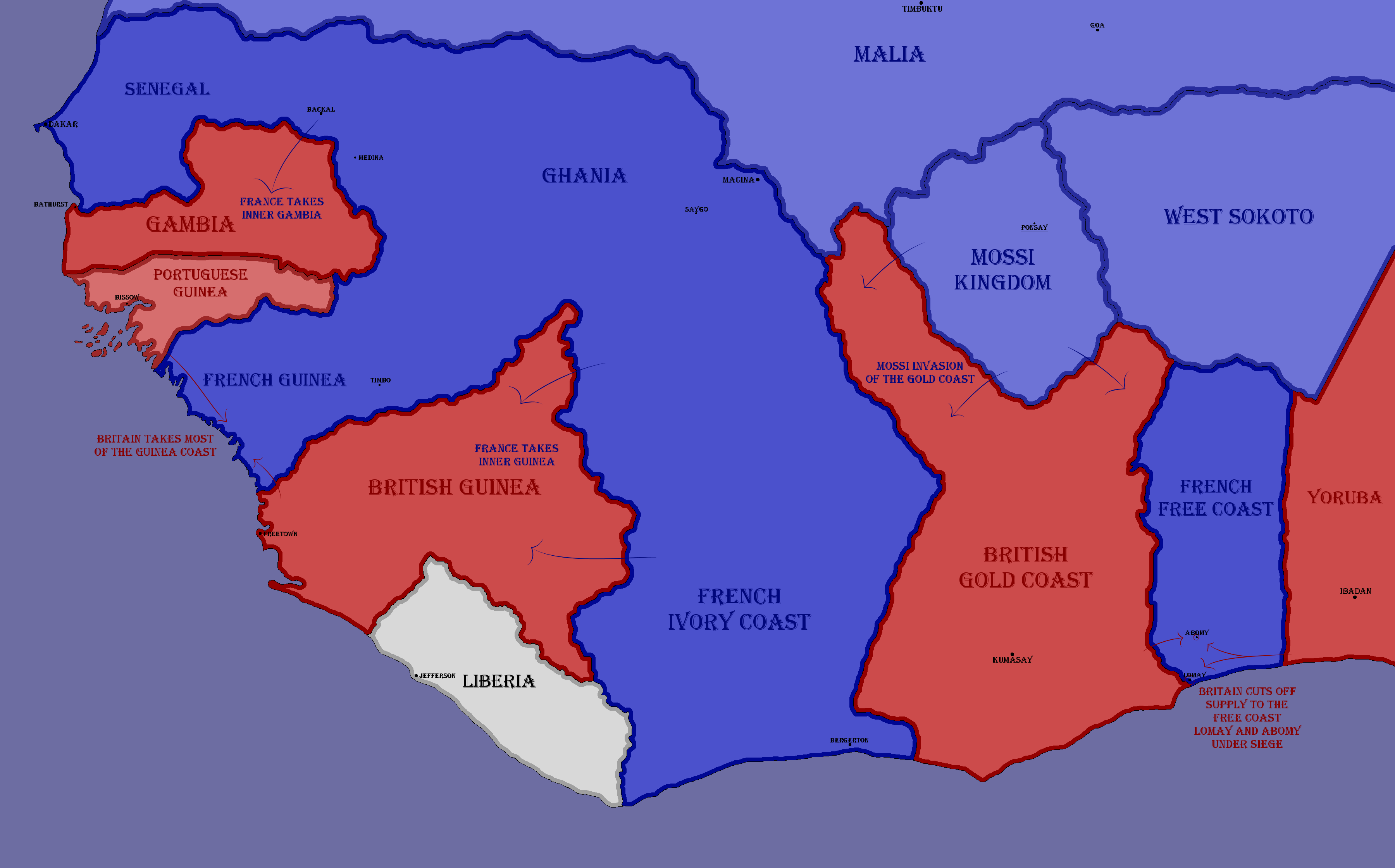 Holy moly, 2 months since I posted the last one of these. I really have been quite busy doing other things haven't I? Also doesn't help that I couldn't find the source for half of the city names in West Africa I used back in What is the World 1850 and 1900. |
|
|
|
Post by theman7777 on Dec 14, 2017 21:00:00 GMT
Very nice map! One question: How did the British cut off the French in the Free Coast? Couldn't they reinforce through West Sokoto?
|
|
|
|
Post by MinnesotaNationalist on Dec 14, 2017 21:46:27 GMT
Very nice map! One question: How did the British cut off the French in the Free Coast? Couldn't they reinforce through West Sokoto? Theoretically, yes, but that's quite a bit of journey they'd have to make. The shortest route would have supply coming to Bergerton/Bergerville, up through the Ivory Coast to the Mossi occupied parts of the Gold Coast, and then down to the Free Coast. That's quite a long path, quite a bit of it going through rain forest. |
|
|
|
Post by theman7777 on Dec 17, 2017 2:25:25 GMT
Ah, I see. Thanks for the response!
|
|
|
|
Post by MinnesotaNationalist on Feb 4, 2018 5:30:09 GMT
formatting fixed
made additional edits.
|
|
|
|
Post by MinnesotaNationalist on Mar 17, 2018 4:40:18 GMT
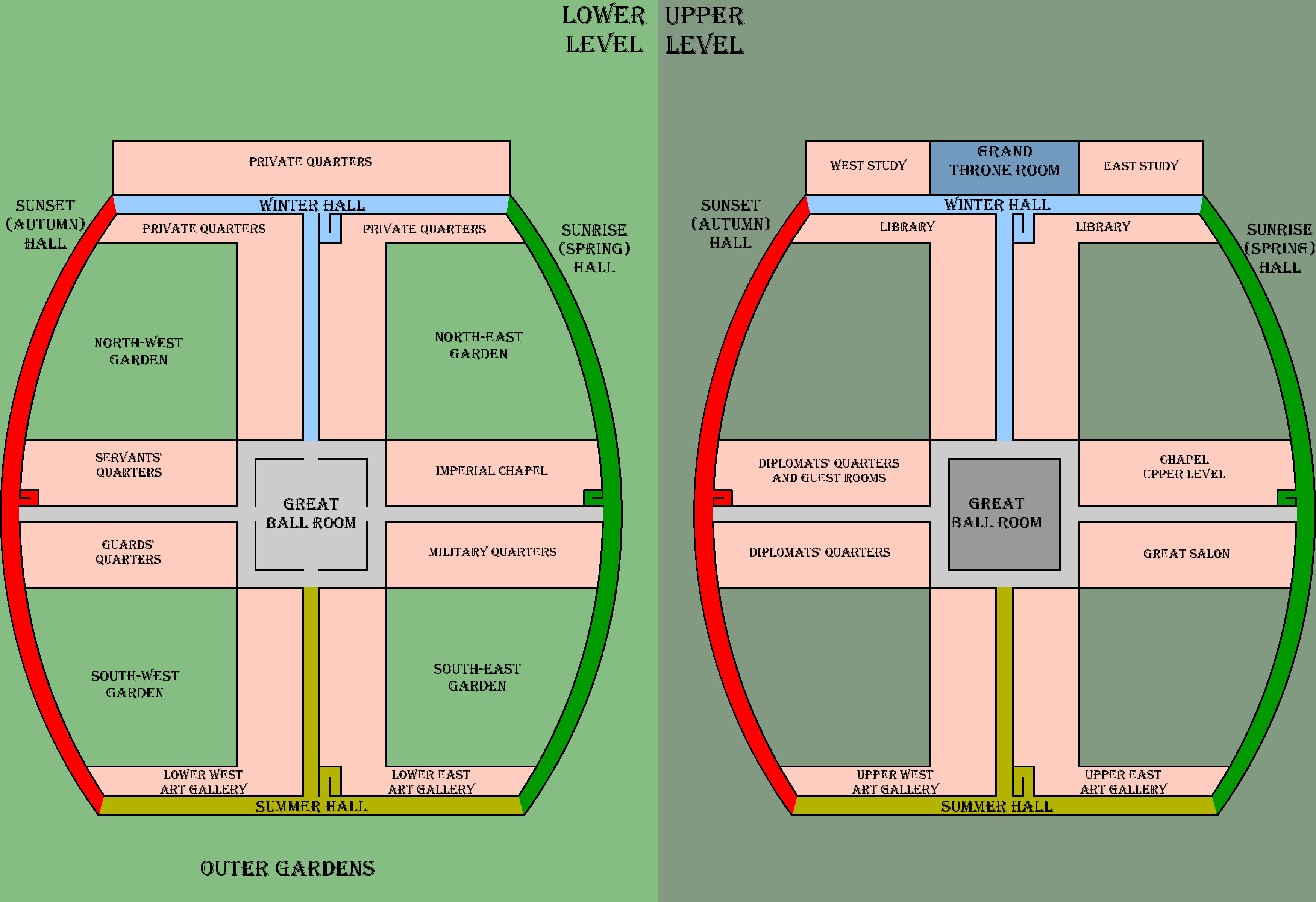 The Palace of Sainte-Jeanne, the People's Palace, the Shining Star, the Universal Throne, the culmination of the reign of Emperor Jean of France. One part architecture, one part astronomy, one part art. This building was intended to be the ultimate piece of French Propaganda, a step up above the Statues of Liberty in New York Harbor, the Bonapartesdenkal in Kassel, Westphalia. Millions were poured into the Palace, only for Emperor Jean to die shortly after completion. Therefor, it was left to Jean's successor, Emperor Charles d'Egier, to inaugurate the palace, and he did so with perhaps the greatest jubilee ever thrown. Emperor Charles invited people from all classes, from Kings and Popes, to Farmers and Laborers, and in a rare occurrence, even invited Emperor Alexander III of Russia and Arthur II of Britain to join (invitations they, understandably, declined). Some reports say upwards of a million people swarmed Sainte-Jeanne for this event (although these reports are likely highly exaggerated). In the Inauguration of Sainte-Jeanne, three ceremonies were held: One was a tribute to Emperor Jean, such a beloved Emperor among the lower classes; Another was the official coronation of Emperor Charles, held in the center of the Grand Ball Room; the last being the inauguration of the palace itself. In the spirit of Emperor Jean, Charles throughout the festivities would do something he would rarely do as Emperor, and that was to speak to the everyday people, asking them about their problems to what he could to alleviate them, even if only temporarily, although it was evident that Charles simply didn't have the same optimistic charm that just radiated off of Jean. Charles would also, again in the spirit of Jean, personally aid in the clean-up of the party, at least as much as his age would allow him to. The Palace is remarkable in it's beauty, most notably in the Sunrise, Sunset, and, to a lesser extent, Summer Halls in an attempt to capture that of the Hall of Mirrors back in Versailles, on the other side of Paris from Sainte-Jeanne. The Sunrise and Sunset Halls were both precisely built so that the outer walls will always face towards the part of the horizon from which the sun comes up or the sun goes down, respectively. Many have described the feelings of the Sunrise and Sunset in their respective halls, with the Sunrise bringing vibrant, youthful energy in the form of lively greens and yellows, that can bring cheer even to the most depressed. The Sunset brings warmth in the reds and oranges, as if standing near a hearth. |
|
|
|
Post by MinnesotaNationalist on Mar 25, 2018 22:07:14 GMT
 Much of early 1915 was silent. Britain quietly patrolled the Mediterranean, with French ships swiftly fleeing to any safe harbor they can get to. France did introduce the Sousmarin (or SM-Boat, or Submarine), which did damage many British boats, but could never kill before they had to flee. Rumors come down from the Baltic of France using weaponized aerocarts to attack ships, but these are surely nothing more than rumors. On the Isle of Sicily, King Vittorio flees by aerocart from Caltanissetta as French forces push further into the Island. The most important battle in the Mediterranean in Early 1915 was the Battle of Ustica in May. Part of the British fleet was patrolling the Tyrrhenian Sea, when this fleet was surprised by large French force. The Brits were able outmaneuver the French enough for minimal damage to be inflicted on them, but it started to turn around when the rumors of French Waraeros was confirmed. Of the 9 British ships that went into the Battle of Ustica, including 2 battleships, 3 cruisers, and 4 destroyers, only 2 cruisers and one destroyer made it out, with the French having losing slightly less. The Mediterranean was contested once more. |
|
|
|
Post by MinnesotaNationalist on May 13, 2018 15:12:53 GMT
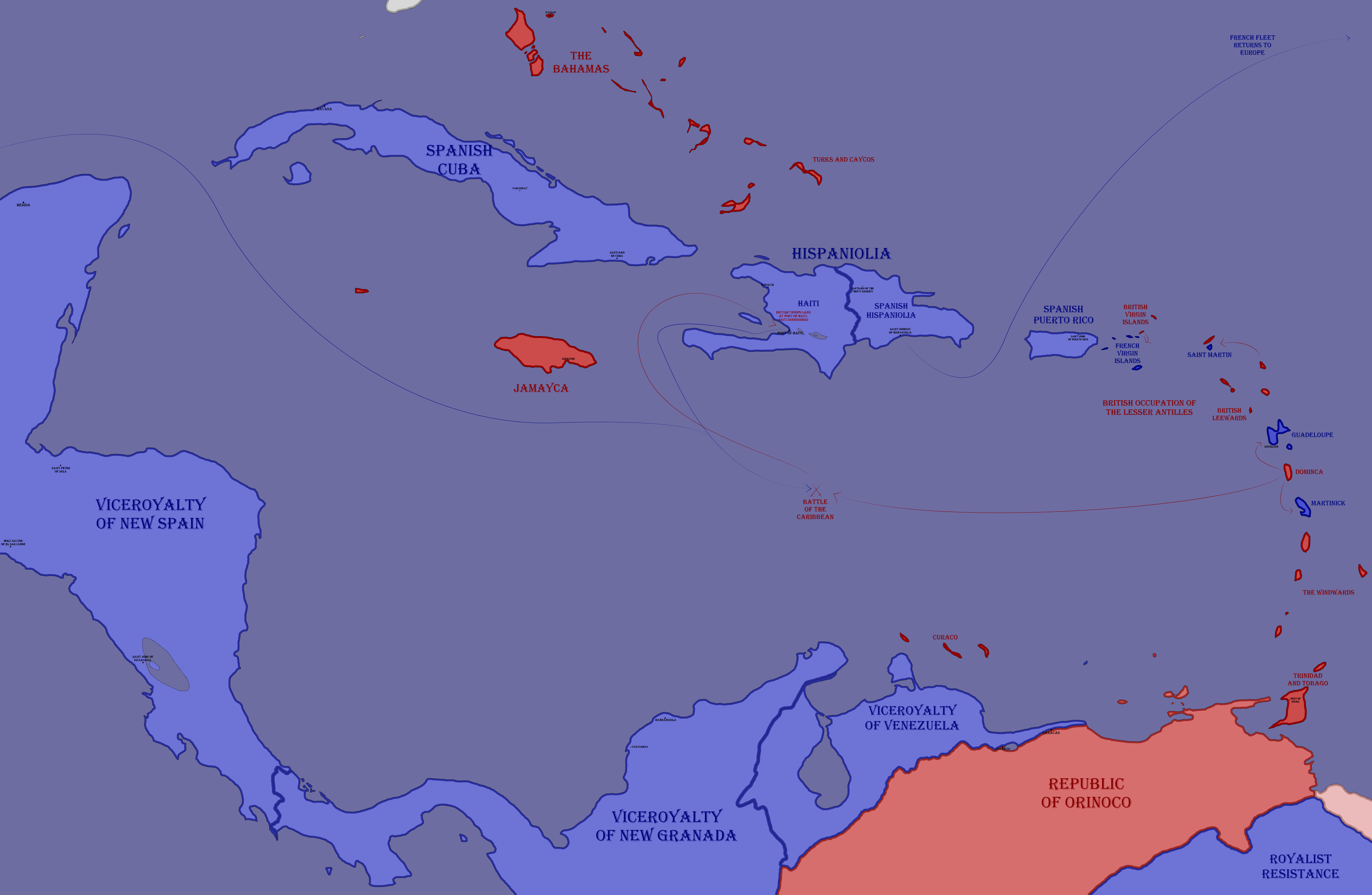 While there were smaller skirmishes between the French and British Fleets, no grand campaign was made against one another. Then, in early 1915, the French fleet retreated back to the Mediterranean to reinforce their fleets there. The remains of the Pro-French fleet, made up mostly of Haitians with what few ships the Mexicans bothered to send, was decimated. It was not long later that the Brits landed in Port-of-Haiti, where the Haitians immediately surrender. The rest of Winter and Spring of 1915 was spent cleaning up the Lesser Antilles, with plans for the rest of the Greater Antilles in in fall of 1915. |
|
|
|
Post by MinnesotaNationalist on May 22, 2018 23:50:05 GMT
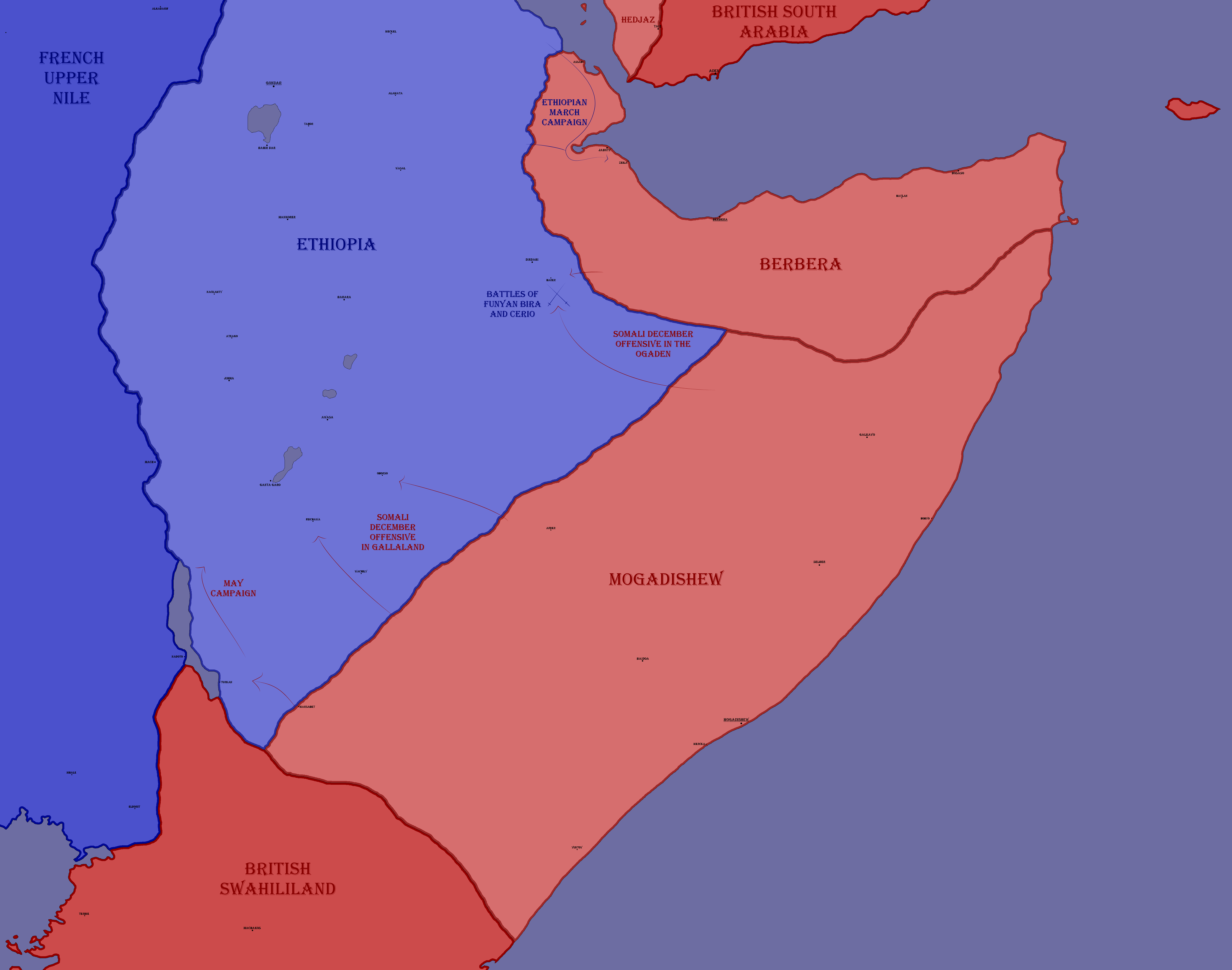 In December of 1914, the most indirect front of the war opened up in East Africa. The French called it the Somali Front, the Brits, the Ethiopian Front, after the respective enemy in the front. The Somalis of Berbera and Mogadishew invaded Ethiopia through the Ogaden and the Gallaland, to limited success. The following March, Ethiopia responded by invading the Jabuty province, to more success, occupying the province capital (of the same name). Their march to Zeila, though, was halted. A second Somali campaign against the Ethiopians started in May, but has yet to see much success. |
|
|
|
Post by MinnesotaNationalist on Jun 26, 2018 17:35:40 GMT
|
|
|
|
Post by MinnesotaNationalist on Jul 8, 2018 0:49:29 GMT
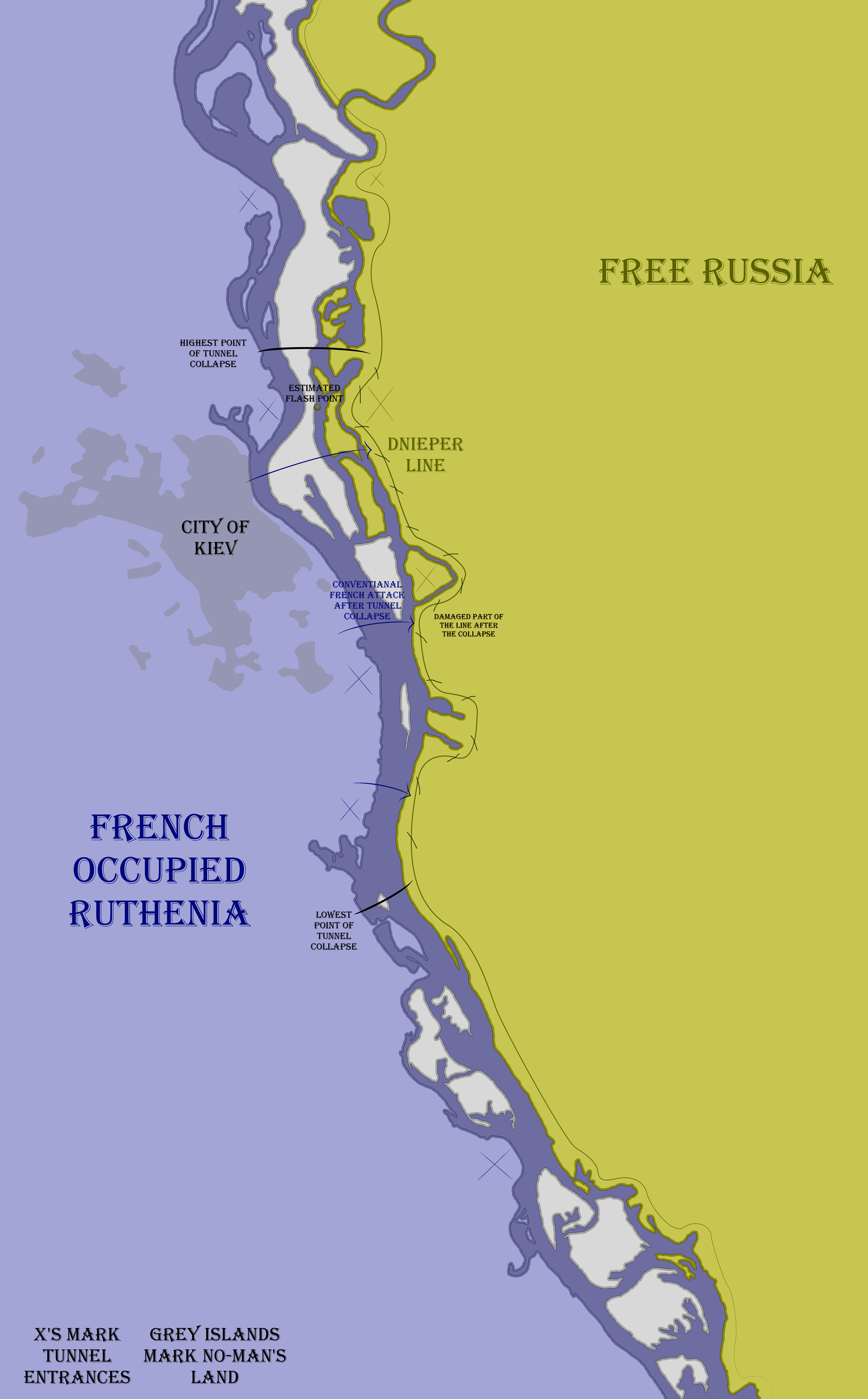 For months, the Ruthenian Front on the Dnieper was silent. Any attempt to start another season of Campaigning by crossing the Dnieper would be suicidal. Instead, for these quiet months, the French and Russians dug tunnels beneath the river near Kiev to get around this problem. Then in September, diggers from enemy sides came across each other accidentally. They reported back to their superiors, who in turn threw troops down the tunnels, thus beginning the battle of Kiev, or the battle of the Blood Dnieper. After a few minutes of fighting in the tunnels, the waters of the Dnieper rumbled, the earth shook, buildings fell, and great waves hit Kiev. The tunnels had collapsed, killing thousands of soldiers instantly. The bloodiest second in human history. As the tunnels collapsed, the defensives on both sides were damaged, and in the resulting confusion both sides crossed the Dnieper in a series of attacks and counter-attacks, hoping to break the stalemate. After several days, commanders from both sides agreed to a truce to regain their bearings, finally ending the battle. Locals had already by this point started referring to the Dnieper as the “Red-Tinted Dnieper,” but this event in particular is referred much more bluntly as the Bloody Dnieper, thus the name of The Battle of the Bloody Dnieper. Some reported that the river water downstream was noticeably thicker. Upwards of a 100,000 died on both sides on the deadliest days so far in the war. The Geography of the Dnieper was changed as the river bed sank by 2 meters, changing the normally calm Kievan section of the river into rapids. After the battle, officers on both the French and Russian sides came to the conclusion that any attempt to break the deadlock on the Dnieper would require a campaign of incalculable proportions. While the Russians started to breath a sigh of relief, the French set their eyes once more on Constantinople, the City of the World’s Desire. |
|
|
|
Post by MinnesotaNationalist on Jul 8, 2018 16:01:21 GMT
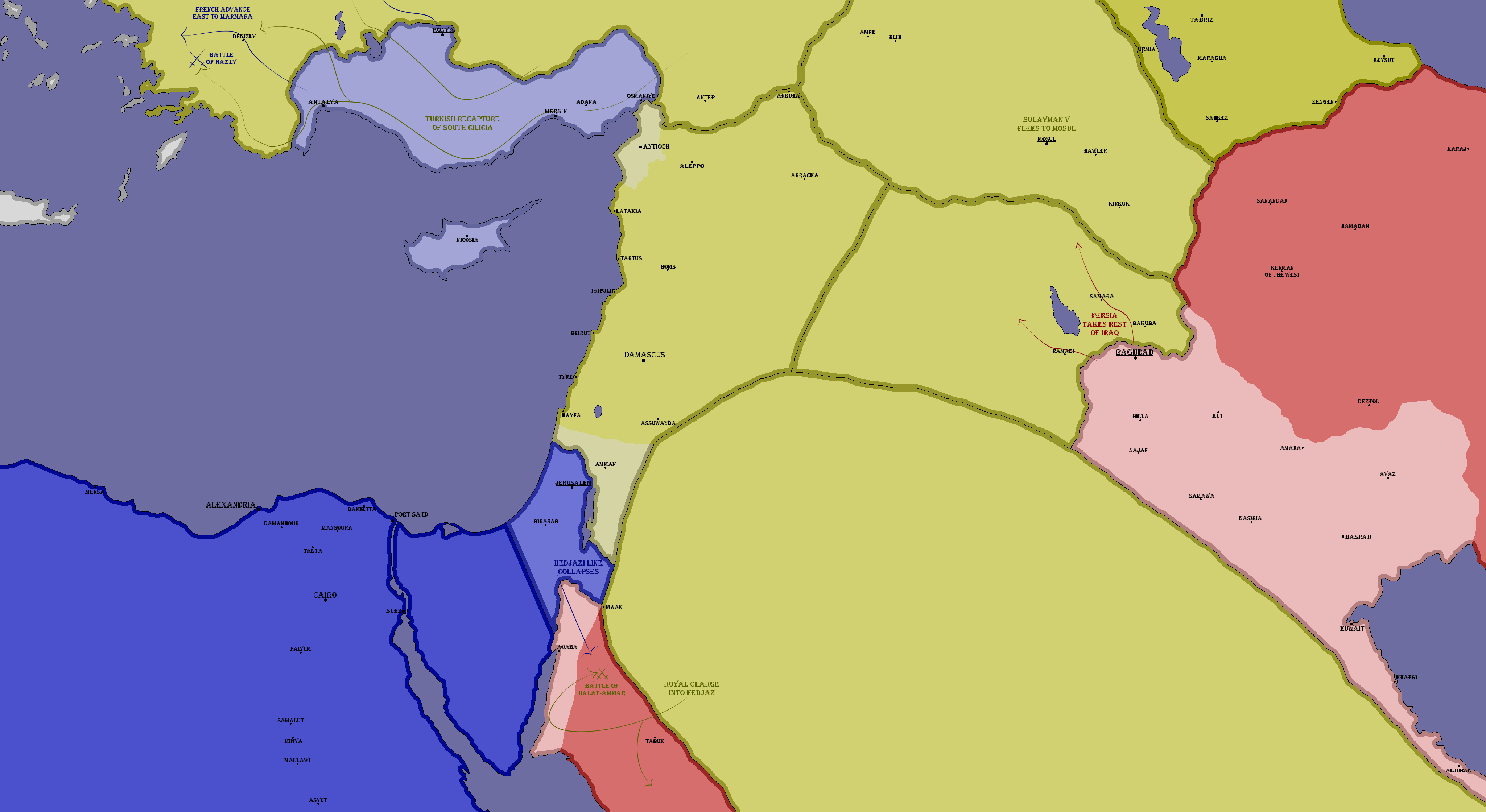 France starts Summer off by taking Konya, capital of the Turkish state, the other big republic in the Old World. Many Turks start to flee northward in hopes of safety from French onslaught in their land, with the goal in mind of heading to Russian Azerbaijan. But, there in Konya, the French stay still for many months, allowing for Turkish forces to reorganize, guaranteeing that the refugees would remain safe for at least a few more months still. Then, in September, after the Battle of Bloody Dnieper had come to an end, the French rapidly marched west to Constantinople, opening up a route for Turks to regain Konya and much of their previously held southern territories. The Turks then wheeled west in pursuit of the French, but the French were able to hold their ground at Nazly, confirming their positions at the western end of Anatolia. In the south, King Saud III of the Saudi State declares war upon Hedjaz, with he and King Fahd of Syria leading the charge against them, rushing from the barren deserts of Central Arabia. In the resulting confusion, Hedjazi forces fighting the French in Palestine collapses. French forces quickly follow south in pursuit, only for King Fahd to surprise the French at Halat Ammar, securing a decisive and important victory. In the east, King Sulayman of Iraq flees to Mosul as Persian forces take the last of the densely populated portions of his country. His army was quick to follow, and by December, the Persians had begun entering Kurdistan from Iraq. In the east, the Zagros mountains between Kurdistan and Persia allowed for enough defensive capabilities to make an invasion from there unnecessarily harsh and brutal. |
|
|
|
Post by MinnesotaNationalist on Jul 9, 2018 16:41:15 GMT
Since I've already been posting characters, might as well continue the trend. 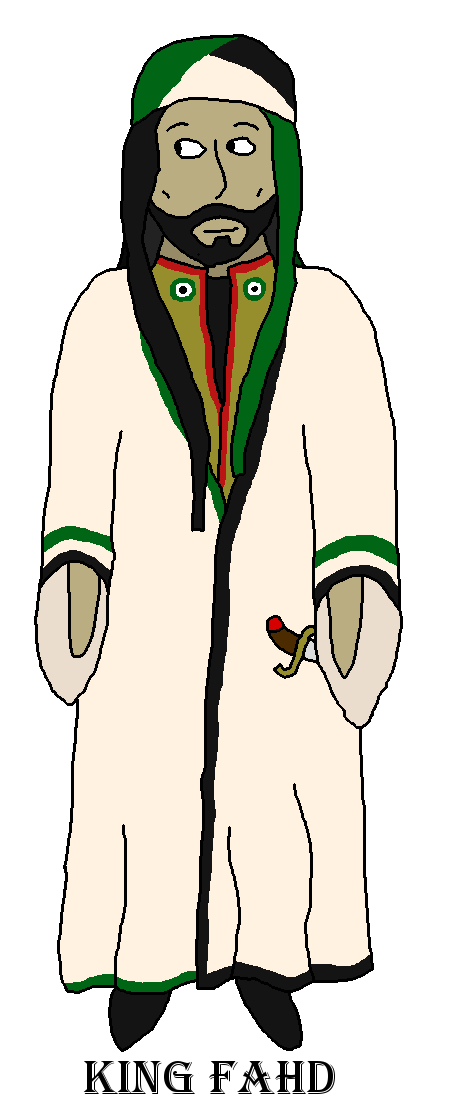 Fahd al-Salil is the current King of Syria. Known for his dynamism and his ambition, as well as his pragmatism and patience, he is currently leading Syria, rather successfully, against France, Britain, and their respective allies in the Middle East. Fahd himself is a Sunni Muslim, but Syria is a kingdom with a considerable many different religious groups, and now with the occupation of the Two Patriarchies, a large influx of Christians has been added to the Syrian State. This has more-or-less forced Fahd and the Salilid dynasty to a policy of secularism, for if they do anything to offend the non-Sunnis, they're suddenly offending well over a third of the Syrian population. Fahd has indeed, at least so far, been successful in navigating the complicated Sunni-Shia divisions and rallying the Syrian people not behind Islam or any given branch of it, but behind the Syrian Nation itself. |
|
|
|
Post by MinnesotaNationalist on Jul 10, 2018 15:38:46 GMT
 The Mediterranean remains a fiercely contested battleground, as France uses what Britain considers to be “dirty tactics.” Britain had started to design their own Waraeros, but they would not see service until November. In the meantime, the Royal Navy was consistently reinforced, especially from the short-lived Caribbean theatre, which was already coming to a close. French forces continued to advance into Sicily, and in October, the last of the large-scale Sicilian resistance came to an end. The next month, Joseph V of Naples was able to be slipped over to Syracuse, where he was confirmed and crowned, formally, as the one true King of Sicily. Joseph would than be trapped in Sicily while British ships made it too dangerous to return. The most important event in the Western Mediterranean in late 1915 was in Tripoli. Since the end of the Third Explorers’ War, Tripolitania had been quite discontent with their position as a French pet, and earlier in 1915, the old king, Mehmed IV, replaced by his brother Yusuf III Karamanli. So, in May the Tripolitanians sent a message to the Brits saying they were willing to switch sides. In August, British ships and limited British troops were landed in the city of Tripoli, and a treaty was signed between Yusuf and the British Admiral William Tyson (son of the infamous Arvel Tyson), securing Tripolitanian switch to the British side. The French and many of their allies were understandably livid. Tripolitanian soldiers in the Armee were locked up in executed upon orders of Prince Galtier, who had been increasingly been given power as Emperor Charles d’Egier grew more feeble. The French weren’t the only ones angry at the switch, as some of Yusuf III’s brothers and cousins were in favor of the French. France is now preparing to throw off the Brits and the treacherous Yusuf from Tripoli. |
|
|
|
Post by MinnesotaNationalist on Jul 31, 2018 18:31:45 GMT
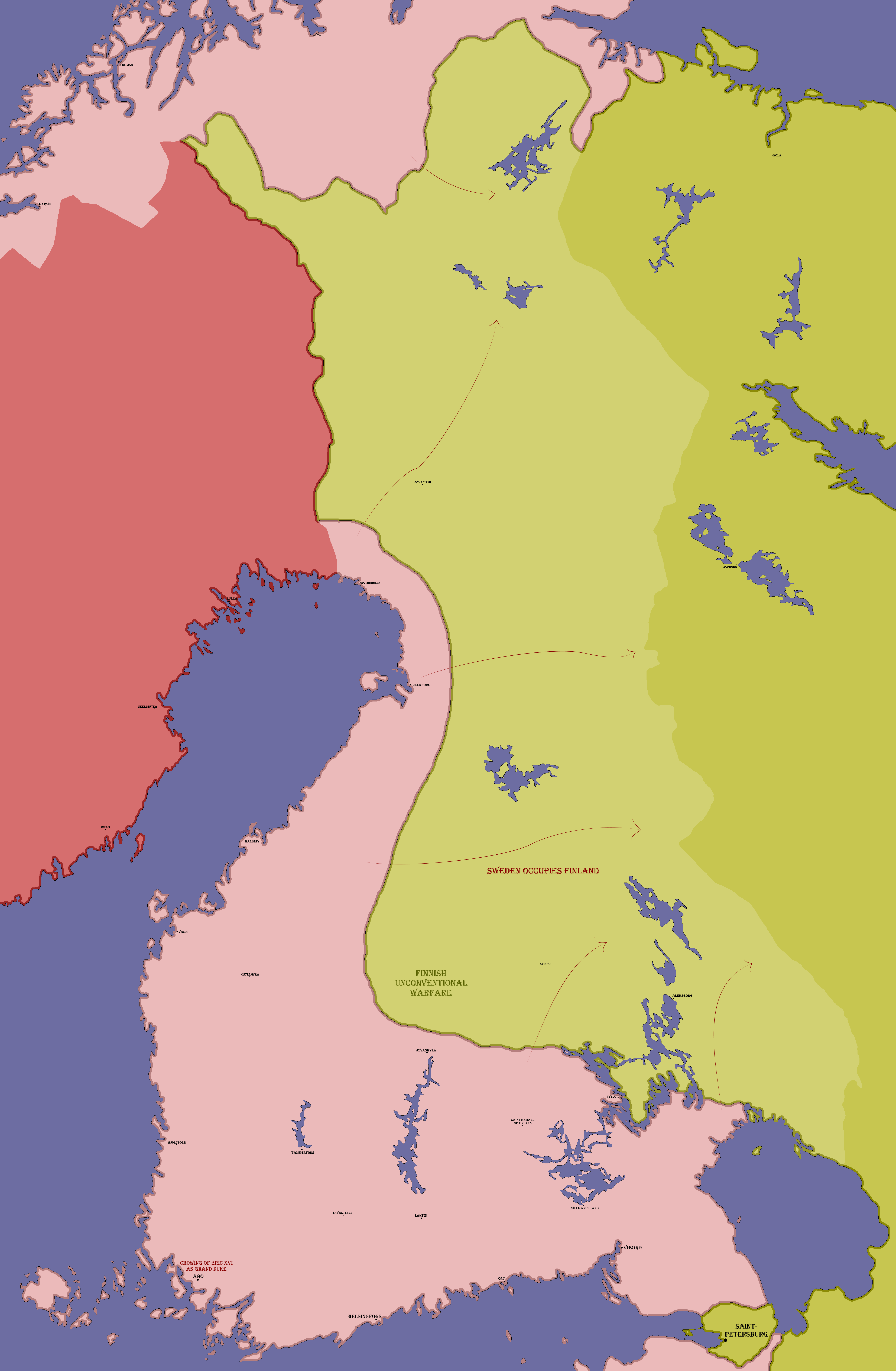 Back in January of 1915, Peter Romanov, pretender to the Russian Throne, met in Helsingfors with King Eric XVI of Sweden and Swedish Prime Minister Ernst Langenberg. There, the Swedes came for one thing and one thing only: Finland. They seeked to right the wrongs done over a hundred years ago. After many months of on-and-off negotiation, Peter Romanov finally agreed to hand over Finland to the Swedes, in turn for large sum of money, additional payments in the future, and many other concessions. This agreement came to full affect on June 21st. On the same day, Eric XVI was crowned Grand Duke of Finland in Abo. At the same time in Rimlyangrad, President Isaac Petrov was meeting with, among others, Finnish separatists. They came to an understanding, that being that Isaac Petrov and the Russian Republic will support Finnish independence if Finns fought side by side with Russians, and were willing to hold off on independence until the war was over. June 21st was thus seen as the beginning of the Finnish struggle for independence against Sweden. Throughout late 1915, Sweden would march to secure Finland, but they would be met with stiff, unconventional resistance. The Finns would hide in the vast wilderness of their homeland, and when the Swedes go to hunt down the Finns, they would find nothing but empty camps. As the Swedes would return to base, they would be harassed from a distance the whole way back. By Christmas of 1915, the Swedes would nominally control all of the Grand Duchy, but they still had a long way to go to rule it. |
|
|
|
Post by MinnesotaNationalist on Aug 1, 2018 1:05:34 GMT
 Many of the characters here were mentioned at some point, at least in the story I write with the TL, but some I haven't, namely the 2nd and 3rd child of Napoleon II and their respective descendants. At this point, I'm honestly not sure what the story of Joseph and his descendants are. Joseph likely was a general in the French military, but probably never saw much combat outside of taking down a rebellion or two. Lucien his son I'd honestly not be surprised if they headed off to America or something. I didn't include wives or husbands in this, because I feared it would clutter up the image too much. That being said, Napoleon I ended up marrying Catherine Pavlovna Romanov, sister of Emperor Alexander I. I do have the names of many other spouses of the Bonaparte family, including Anne's (daughter of Nappie) husband Christian of Schleswig-Holstein-Sonderburg-Glucksburg, heir to the Danish Throne. Note on the Illegitimate children of Napoleon III: There's many out there, no one's quite sure how many. Napoleon III himself confirmed 12, of which have been given the special family name of "de Corse," "of Corsica." Often, this name is translated into English as "Decor." Currently, there's a rather prominent American painter with the name, Henry Decor, illegitimate grandson of Napoleon III. |
|
|
|
Post by MinnesotaNationalist on Aug 14, 2018 17:17:29 GMT
The Light that'll Never Die
To the tune of Katyusha
Another step into the World Born at Tilsit and the War of the Russian Succession. This time, a particularly patriotic Russian pens a song glorifying Russia as the successor to Rome, taking up the torch of Justinian and Theodora of Restoring Rome. The French (and to some extent the Brits) meanwhile are cast off as the Barbarians that attempted to destroy Rome.
|
|
|
|
Post by MinnesotaNationalist on Aug 15, 2018 18:10:49 GMT
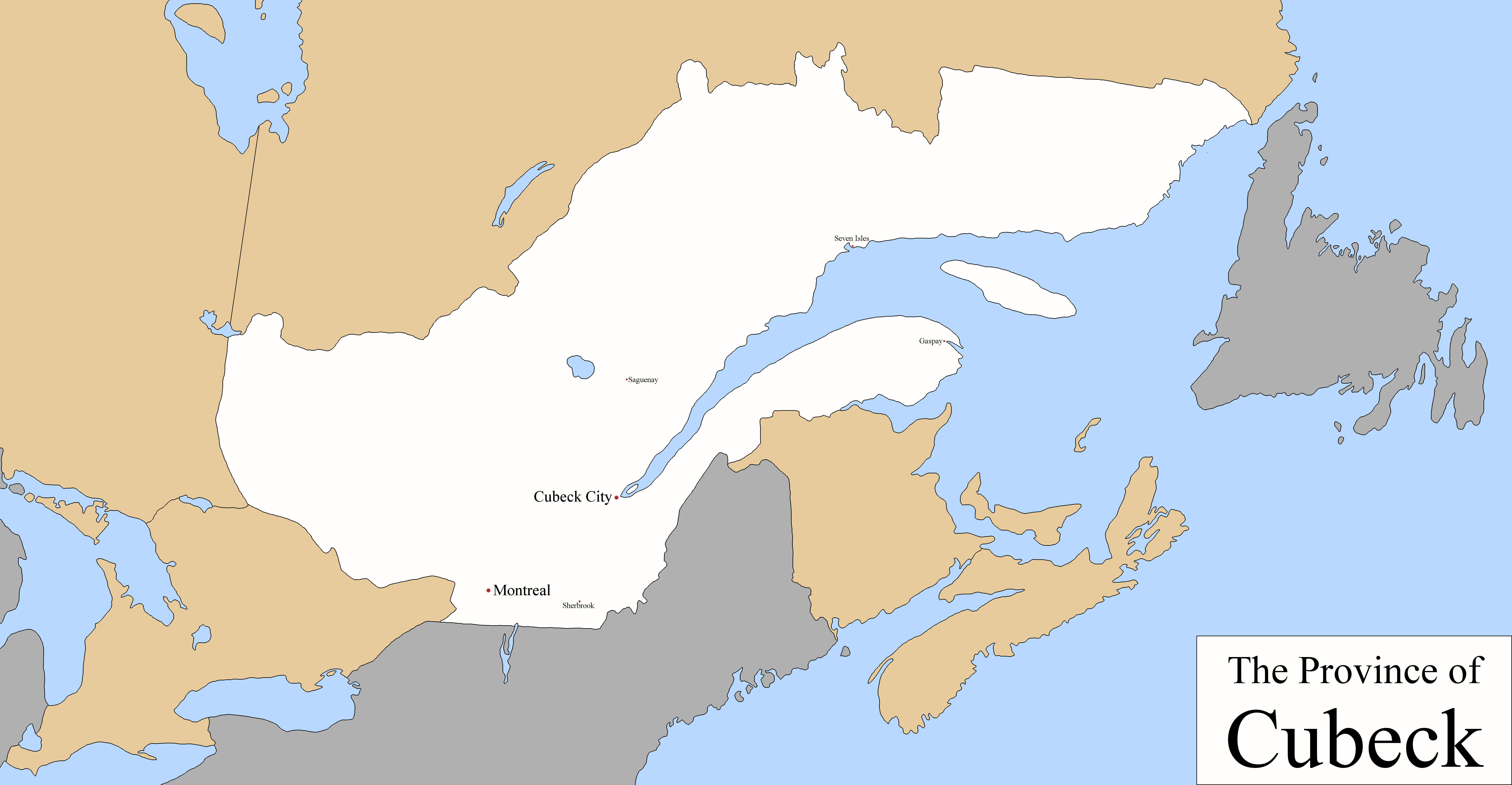 The Province of Cubeck, member of the Dominion of Canada and the only part of the British Empire with a French speaking majority (much to the displeasure of every good, Frenchmen-hating Anglo-Saxon in the Empire). The Brits only allow Cubeck to keep it's French language because they fear what would happen otherwise (not like the Cubeckians like their situation any less), although all laws in Cubeck have to be written in English, as well as French. The Province of Cubeck used to be known as Quebec, but during the American War in the 1860's, the name was changed due to anti-French resentment. Soon, a large wave of name and word changes, removing and rewriting many of the more obviously French parts of the English language, most notably in removing the three most hated letters in the British Empire: Que. This culminated in Anne II changing her title from "Queen" to "Cween," favoring the more Celtic-appearing spelling over the French. Today, Que is a common derogatory term for Frenchmen and French-sympathizers. The only part of the English-speaking world that didn't go through this change was, of course, America. But even there, some are trying to implement the reformed English in the country. It's common to notice that Pro-British writers and journalists will write with the reformed spelling. Hell, even when non-political writing, the new spelling will pop up, immediately informing the reader who the author supports. One romance novel was boycotted by Republicans over the fact that the author, a Democrat Anglophile, had written in the book in reformed English. |
|